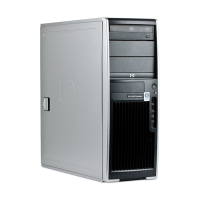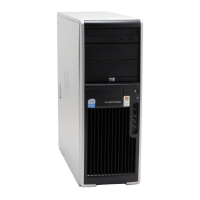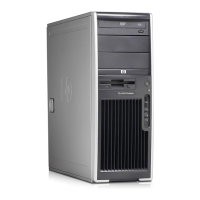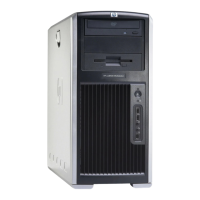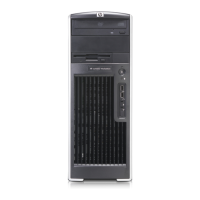REMOVAL AND REPLACEMENT OF COMPONENTS 97
Chapter 4
PCI Express
PCI Express is a new hardware interconnect standard (for example, I/O slots). PCI Express is point-to-
point architecture and uses a serial data transmission protocol. A single PCI Express lane consists of 4
wires and is capable of transmitting 250 MB/sec in a single direction or 500 MB/sec in both directions
simultaneously. This bandwidth is not affected by what is happening on other PCI Express buses or
legacy PCI/PCI-X buses (provided that total bandwidth can be handled by the CPU and the memory
subsystem). The transmission protocol is somewhat similar to that used for a LAN connection and
contains error correction and detection, packet addressing and other network features.
PCI Express improves system attributes. PCI Express enables a low-power, scalable, high-bandwidth
communication path with a small number of connections (wires) compared to traditional parallel
interfaces (for example, PCI).
The PCI Express I/O slots can support other PCI Express cards with lesser bus bandwidth than what is
physically defined for the slot. Use the following table to determine compatibility.
For example, a PCI Express x4 card does not work in a PCI Express x16 slot, but a PCI Express x16
card works in a PCI Express x16 slot.
Table 4-5
PCI Express Compatibility Matrix for xw4200
PCI Express x1 Slot PCI Express x4 Slot PCI Express x8 Slot PCI Express x16 Slot
PCI Express x1 Card Y not available not available Y
PCI Express x4 Card N not available not available N
PCI Express x8 Card N not available not available N
PCI Express x16 Card N not available not available Y

